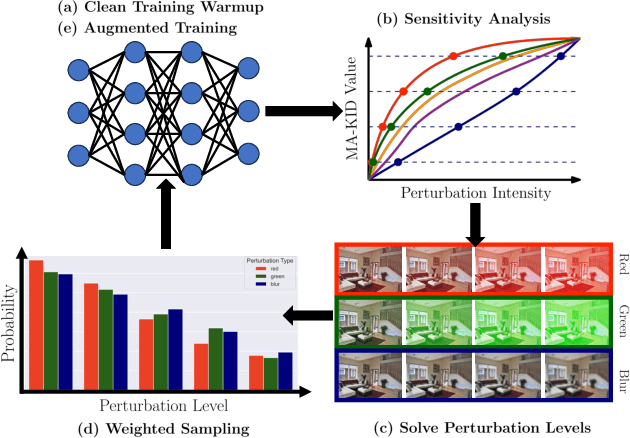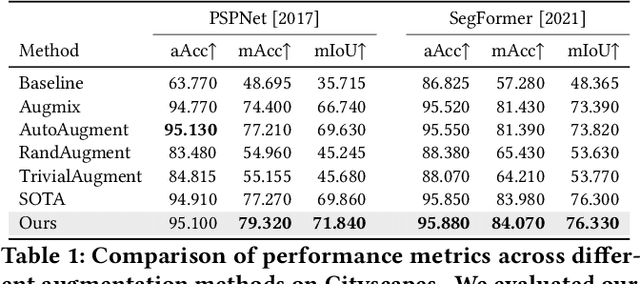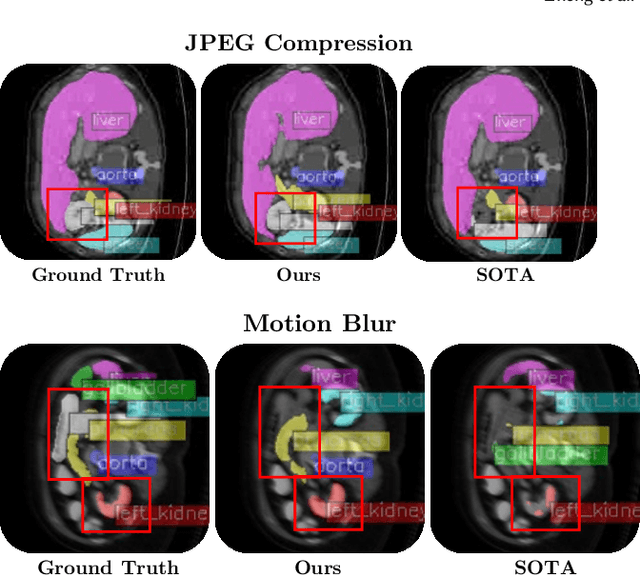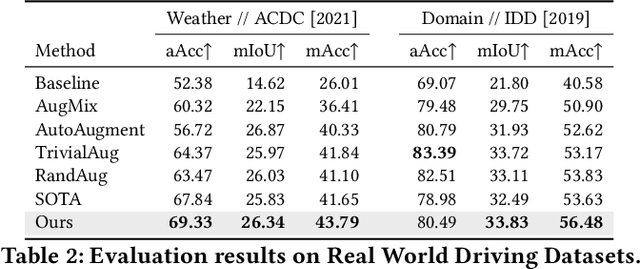Yu Shen
Key Laboratory of Road and Traffic Engineering of the Ministry of Education, Tongji University, Shanghai, China
Shape My Moves: Text-Driven Shape-Aware Synthesis of Human Motions
Apr 04, 2025Abstract:We explore how body shapes influence human motion synthesis, an aspect often overlooked in existing text-to-motion generation methods due to the ease of learning a homogenized, canonical body shape. However, this homogenization can distort the natural correlations between different body shapes and their motion dynamics. Our method addresses this gap by generating body-shape-aware human motions from natural language prompts. We utilize a finite scalar quantization-based variational autoencoder (FSQ-VAE) to quantize motion into discrete tokens and then leverage continuous body shape information to de-quantize these tokens back into continuous, detailed motion. Additionally, we harness the capabilities of a pretrained language model to predict both continuous shape parameters and motion tokens, facilitating the synthesis of text-aligned motions and decoding them into shape-aware motions. We evaluate our method quantitatively and qualitatively, and also conduct a comprehensive perceptual study to demonstrate its efficacy in generating shape-aware motions.
ScreenLLM: Stateful Screen Schema for Efficient Action Understanding and Prediction
Mar 26, 2025Abstract:Graphical User Interface (GUI) agents are autonomous systems that interpret and generate actions, enabling intelligent user assistance and automation. Effective training of these agent presents unique challenges, such as sparsity in supervision signals, scalability for large datasets, and the need for nuanced user understanding. We propose stateful screen schema, an efficient representation of GUI interactions that captures key user actions and intentions over time. Building on this foundation, we introduce ScreenLLM, a set of multimodal large language models (MLLMs) tailored for advanced UI understanding and action prediction. Extensive experiments on both open-source and proprietary models show that ScreenLLM accurately models user behavior and predicts actions. Our work lays the foundation for scalable, robust, and intelligent GUI agents that enhance user interaction in diverse software environments.
CAML: Collaborative Auxiliary Modality Learning for Multi-Agent Systems
Feb 25, 2025Abstract:Multi-modality learning has become a crucial technique for improving the performance of machine learning applications across domains such as autonomous driving, robotics, and perception systems. While existing frameworks such as Auxiliary Modality Learning (AML) effectively utilize multiple data sources during training and enable inference with reduced modalities, they primarily operate in a single-agent context. This limitation is particularly critical in dynamic environments, such as connected autonomous vehicles (CAV), where incomplete data coverage can lead to decision-making blind spots. To address these challenges, we propose Collaborative Auxiliary Modality Learning ($\textbf{CAML}$), a novel multi-agent multi-modality framework that enables agents to collaborate and share multimodal data during training while allowing inference with reduced modalities per agent during testing. We systematically analyze the effectiveness of $\textbf{CAML}$ from the perspective of uncertainty reduction and data coverage, providing theoretical insights into its advantages over AML. Experimental results in collaborative decision-making for CAV in accident-prone scenarios demonstrate that \ours~achieves up to a ${\bf 58.13}\%$ improvement in accident detection. Additionally, we validate $\textbf{CAML}$ on real-world aerial-ground robot data for collaborative semantic segmentation, achieving up to a ${\bf 10.61}\%$ improvement in mIoU.
AUKT: Adaptive Uncertainty-Guided Knowledge Transfer with Conformal Prediction
Feb 25, 2025Abstract:Knowledge transfer between teacher and student models has proven effective across various machine learning applications. However, challenges arise when the teacher's predictions are noisy, or the data domain during student training shifts from the teacher's pretraining data. In such scenarios, blindly relying on the teacher's predictions can lead to suboptimal knowledge transfer. To address these challenges, we propose a novel and universal framework, Adaptive Uncertainty-guided Knowledge Transfer ($\textbf{AUKT}$), which leverages Conformal Prediction (CP) to dynamically adjust the student's reliance on the teacher's guidance based on the teacher's prediction uncertainty. CP is a distribution-free, model-agnostic approach that provides reliable prediction sets with statistical coverage guarantees and minimal computational overhead. This adaptive mechanism mitigates the risk of learning undesirable or incorrect knowledge. We validate the proposed framework across diverse applications, including image classification, imitation-guided reinforcement learning, and autonomous driving. Experimental results consistently demonstrate that our approach improves performance, robustness and transferability, offering a promising direction for enhanced knowledge transfer in real-world applications.
GUI-Bee: Align GUI Action Grounding to Novel Environments via Autonomous Exploration
Jan 27, 2025Abstract:Graphical User Interface (GUI) action grounding is a critical step in GUI automation that maps language instructions to actionable elements on GUI screens. Most recent works of GUI action grounding leverage large GUI datasets to fine-tune MLLMs. However, the fine-tuning data always covers limited GUI environments, and we find the performance of the resulting model deteriorates in novel environments. We argue that the GUI grounding models should be further aligned to the novel environments to reveal their full potential, when the inference is known to involve novel environments, i.e., environments not used during the previous fine-tuning. To realize this, we first propose GUI-Bee, an MLLM-based autonomous agent, to collect high-quality, environment-specific data through exploration and then continuously fine-tune GUI grounding models with the collected data. Our agent leverages a novel Q-value-Incentive In-Context Reinforcement Learning (Q-ICRL) method to optimize exploration efficiency and data quality. Additionally, we introduce NovelScreenSpot, a benchmark for testing how well the data can help align GUI action grounding models to novel environments and demonstrate the effectiveness of data collected by GUI-Bee in the experiments. Furthermore, we conduct an ablation study to validate the Q-ICRL method in enhancing the efficiency of GUI-Bee. Project page: https://gui-bee.github.io
Sensitivity-Informed Augmentation for Robust Segmentation
Jun 04, 2024



Abstract:Segmentation is an integral module in many visual computing applications such as virtual try-on, medical imaging, autonomous driving, and agricultural automation. These applications often involve either widespread consumer use or highly variable environments, both of which can degrade the quality of visual sensor data, whether from a common mobile phone or an expensive satellite imaging camera. In addition to external noises like user difference or weather conditions, internal noises such as variations in camera quality or lens distortion can affect the performance of segmentation models during both development and deployment. In this work, we present an efficient, adaptable, and gradient-free method to enhance the robustness of learning-based segmentation models across training. First, we introduce a novel adaptive sensitivity analysis (ASA) using Kernel Inception Distance (KID) on basis perturbations to benchmark perturbation sensitivity of pre-trained segmentation models. Then, we model the sensitivity curve using the adaptive SA and sample perturbation hyperparameter values accordingly. Finally, we conduct adversarial training with the selected perturbation values and dynamically re-evaluate robustness during online training. Our method, implemented end-to-end with minimal fine-tuning required, consistently outperforms state-of-the-art data augmentation techniques for segmentation. It shows significant improvement in both clean data evaluation and real-world adverse scenario evaluation across various segmentation datasets used in visual computing and computer graphics applications.
SHARE: Single-view Human Adversarial REconstruction
Dec 30, 2023Abstract:The accuracy of 3D Human Pose and Shape reconstruction (HPS) from an image is progressively improving. Yet, no known method is robust across all image distortion. To address issues due to variations of camera poses, we introduce SHARE, a novel fine-tuning method that utilizes adversarial data augmentation to enhance the robustness of existing HPS techniques. We perform a comprehensive analysis on the impact of camera poses on HPS reconstruction outcomes. We first generated large-scale image datasets captured systematically from diverse camera perspectives. We then established a mapping between camera poses and reconstruction errors as a continuous function that characterizes the relationship between camera poses and HPS quality. Leveraging this representation, we introduce RoME (Regions of Maximal Error), a novel sampling technique for our adversarial fine-tuning method. The SHARE framework is generalizable across various single-view HPS methods and we demonstrate its performance on HMR, SPIN, PARE, CLIFF and ExPose. Our results illustrate a reduction in mean joint errors across single-view HPS techniques, for images captured from multiple camera positions without compromising their baseline performance. In many challenging cases, our method surpasses the performance of existing models, highlighting its practical significance for diverse real-world applications.
Collaborative Decision-Making Using Spatiotemporal Graphs in Connected Autonomy
Oct 31, 2023



Abstract:Collaborative decision-making is an essential capability for multi-robot systems, such as connected vehicles, to collaboratively control autonomous vehicles in accident-prone scenarios. Under limited communication bandwidth, capturing comprehensive situational awareness by integrating connected agents' observation is very challenging. In this paper, we propose a novel collaborative decision-making method that efficiently and effectively integrates collaborators' representations to control the ego vehicle in accident-prone scenarios. Our approach formulates collaborative decision-making as a classification problem. We first represent sequences of raw observations as spatiotemporal graphs, which significantly reduce the package size to share among connected vehicles. Then we design a novel spatiotemporal graph neural network based on heterogeneous graph learning, which analyzes spatial and temporal connections of objects in a unified way for collaborative decision-making. We evaluate our approach using a high-fidelity simulator that considers realistic traffic, communication bandwidth, and vehicle sensing among connected autonomous vehicles. The experimental results show that our representation achieves over 100x reduction in the shared data size that meets the requirements of communication bandwidth for connected autonomous driving. In addition, our approach achieves over 30% improvements in driving safety.
Towards General and Efficient Online Tuning for Spark
Sep 05, 2023Abstract:The distributed data analytic system -- Spark is a common choice for processing massive volumes of heterogeneous data, while it is challenging to tune its parameters to achieve high performance. Recent studies try to employ auto-tuning techniques to solve this problem but suffer from three issues: limited functionality, high overhead, and inefficient search. In this paper, we present a general and efficient Spark tuning framework that can deal with the three issues simultaneously. First, we introduce a generalized tuning formulation, which can support multiple tuning goals and constraints conveniently, and a Bayesian optimization (BO) based solution to solve this generalized optimization problem. Second, to avoid high overhead from additional offline evaluations in existing methods, we propose to tune parameters along with the actual periodic executions of each job (i.e., online evaluations). To ensure safety during online job executions, we design a safe configuration acquisition method that models the safe region. Finally, three innovative techniques are leveraged to further accelerate the search process: adaptive sub-space generation, approximate gradient descent, and meta-learning method. We have implemented this framework as an independent cloud service, and applied it to the data platform in Tencent. The empirical results on both public benchmarks and large-scale production tasks demonstrate its superiority in terms of practicality, generality, and efficiency. Notably, this service saves an average of 57.00% memory cost and 34.93% CPU cost on 25K in-production tasks within 20 iterations, respectively.
OpenBox: A Python Toolkit for Generalized Black-box Optimization
Apr 26, 2023Abstract:Black-box optimization (BBO) has a broad range of applications, including automatic machine learning, experimental design, and database knob tuning. However, users still face challenges when applying BBO methods to their problems at hand with existing software packages in terms of applicability, performance, and efficiency. This paper presents OpenBox, an open-source BBO toolkit with improved usability. It implements user-friendly inferfaces and visualization for users to define and manage their tasks. The modular design behind OpenBox facilitates its flexible deployment in existing systems. Experimental results demonstrate the effectiveness and efficiency of OpenBox over existing systems. The source code of OpenBox is available at https://github.com/PKU-DAIR/open-box.
 Add to Chrome
Add to Chrome Add to Firefox
Add to Firefox Add to Edge
Add to Edge